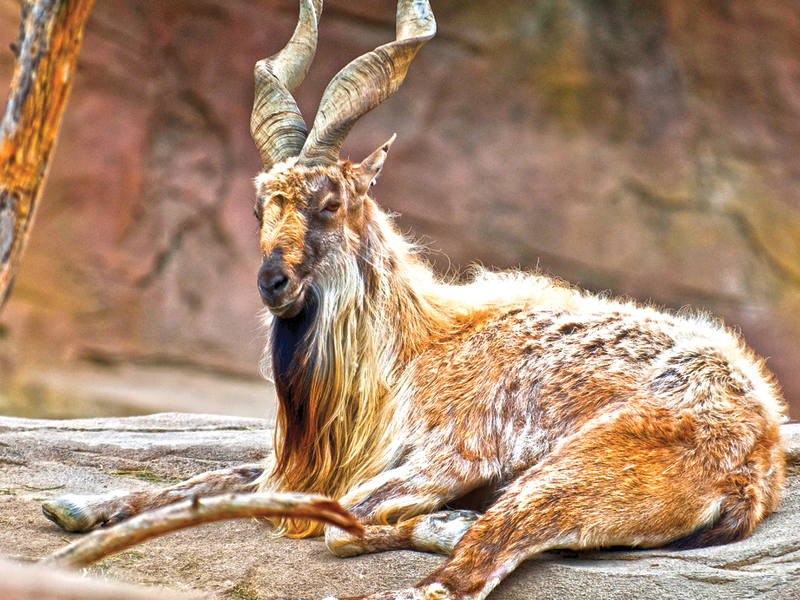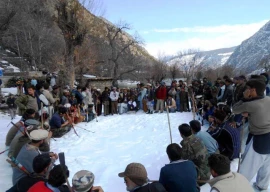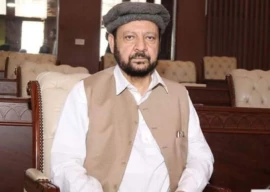
Muhammad Ali Shah, a hunting outfitter representing Zoon Safari, an Islamabad-based firm, was the highest bidder with $62,000.
The auction which took place on Thursday was supervised by Wildlife and Parks Conservator Ghulam Muhammad and conservator Wilayat Noor at the office of Gilgit-Baltistan (G-B) conservator for wildlife and parks. The opening bid fixed by the government ahead of the hunting season—from November to April—was $60,000 for markhors.

“We are grateful to the communities and outfitters who play a major role in conserving wildlife,” said Ghulam Muhammad while addressing the participants. A large number of outfitters and members of the hunting community were also present on the occasion. He appreciated the outfitters for bringing foreigners to the country, saying there had been a massive slump in tourism after the attack on the Nanga Parbat base camp in 2013.
Hunting permits for four markhors, 52 ibexes and eight blue sheep were auctioned. The price for ibex and blue sheep was fixed at $3,000 and $8,000, respectively, for international hunters.
Wildlife experts say that the rarer the species, the higher the fee. The markhor, which is nearing extinction outside Pakistan, is the rarest of all.
The firms which participated in the bidding and won permits included the Hunting Safari of Raja Mehboob Khan, Shikar Safari of Asif Khan, Sultan Golden and Muhammad Naeem, among others. Raja Mehboob made the winning bid, US$ 61,600, for Danyore-Guro area, while Asif Khan got two permits worth US$61,600 and US$61,500 for Bunji-DMT and Skwar-Jutial areas—all for markhors.
The trophy hunting quota is set after annual surveys by wildlife experts. G-B is often referred to as a ‘living museum’ as it is home to a variety of animals, including the Marco Polo sheep, ibex, markhor, urial, blue sheep, lynx, snow leopards, brown and black bears, wolves, foxes, marmotes, chakor, Ram chakor and rare species such as the Tibetan wild ass, also known as the kiang.
The trophy hunting programme was initiated during the 1980s in G-B. Every foreign hunter has to pay a fee to the Government of Pakistan in dollars, while Pakistanis pay in rupees.

Around 80% of the hunting fee goes to the local community, while the government spends the remaining 20% on projects aimed at forest conservation and biodiversity.
The communities use their share to conserve natural resources. The funds are allocated by committees trained by non-governmental organisations in accounts, planning and management.
Published in The Express Tribune, November 21st, 2014.























COMMENTS
Comments are moderated and generally will be posted if they are on-topic and not abusive.
For more information, please see our Comments FAQ